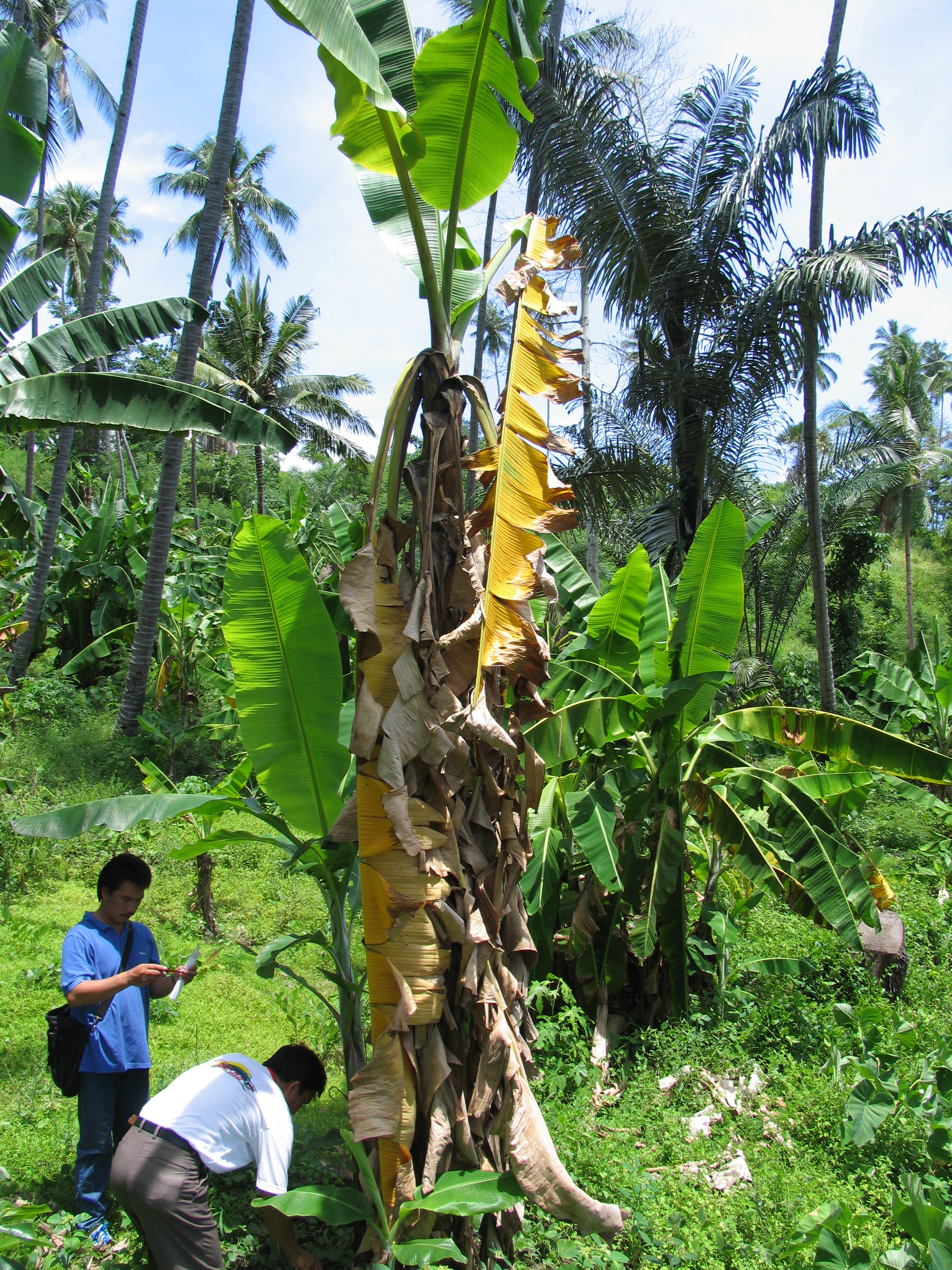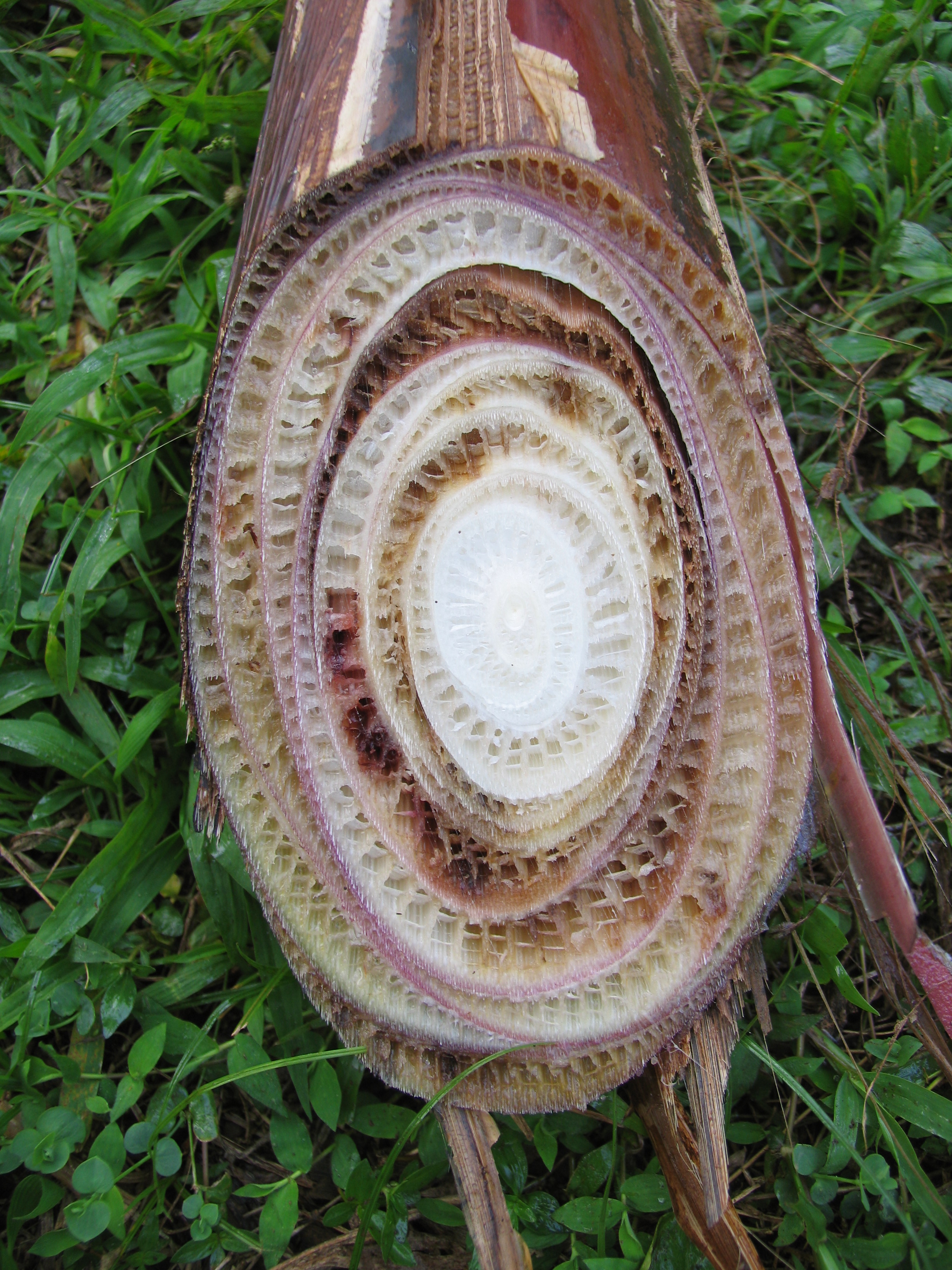
Panama disease - tropical race 4
| Primefact number | Edition | Published | Author |
|---|---|---|---|
| 1331 | Third | Jun 2017 | Plant Biosecurity and Product Integrity |


Panama disease tropical race 4 (Fusarium oxysporum f. sp. cubense) is an exotic plant pest not present in New South Wales. This disease is a serious threat to Australia’s banana industry.
Panama disease is caused by the soil-borne fungus Fusarium oxysporum f. sp. cubense. Panama disease is also called fusarium wilt.
Panama disease is classified into four races, based on the variety of bananas susceptible to different forms of the disease:
- Race 1 infects Lady finger, Ducasse and Sugar banana varieties but not Cavendish bananas
- Race 2 infects cooking banana varieties such as Blue Java and Bluggoe
- Race 3 infects Heliconia plants and not bananas
- Race 4 infects most banana varieties including Cavendish bananas.
There are two important strains of race 4:
- Subtropical Race 4 is present in NSW and usually produces symptoms in Cavendish bananas after a period of cold stress
- Tropical Race 4 is not present in NSW. This strain is more virulent than Subtropical Race 4.
Current situation
Panama disease tropical race 4 was detected in the Tully Valley, Queensland in 2015. Another two banana farms in the Tully Valley have since tested positive; property owners are working closely with Biosecurity Queensland to control the disease and mitigate risk of further spread.
A detection of Panama disease (tropical race 4) in 1997 effectively wiped out the Northern Territory’s Cavendish banana industry as the disease remains in soil for a long period of time.
Notifiable status
Panama disease tropical race 4 (Fusarium oxysporum f. sp. cubense) is a notifiable plant disease in NSW.
All notifiable plant pests and diseases must be reported within 1 working day. You can report notifiable plant pests and diseases by one of the following methods:
- Call the Exotic Plant Pest Hotline 1800 084 881
- Email biosecurity@dpi.nsw.gov.au with a clear photo and your contact details
- Complete an online form
A full list of notifiable plant pests and diseases can be found in Schedule 2 of the NSW Biosecurity Act 2015.
Description
The first external symptoms of Panama disease appear as yellowing on leaf margins of older leaves. This yellowing progresses from the oldest to the youngest leaves.
Leaves gradually collapse either at the petiole or towards the base of the midrib and hang down to form a skirt of dead leaves around the stem (Figure 1).
The youngest leaves are the last to show symptoms and often stand unusually erect giving the plant a spiky appearance.
Infected plants continue to grow and leaves which emerge are usually paler in appearance than those of a healthy plant. The leaf area of emerging leaves is smaller than healthy leaves and shows wrinkling and distortion.
Internal symptoms are characterised by vascular discolouration. Yellowing of the roots and corm progresses to form continuous yellow, red or brown discoloured vascular stands in the stem and bunch stalk (Figure 2).
Fruit of infected plants appears symptomless.
Damage
The Panama disease fungus invades the banana plant through the roots. Panama blocks the vascular system, cutting off the supply of water and nutrients.
Banana plants of all ages are susceptible.
Dead plants leave behind spores that will infect any future plantings.
Distribution
Panama disease has been reported in most banana producing countries around the world including Australia.
Panama Race 1 is found in northern NSW, south east and northern Queensland and in the Carnarvon district of Western Australia.
Panama Race 2 is present in northern NSW and north Queensland.
Panama Race 3 has been found in the Northern Territory.
Panama Tropical Race 4 has been detected in the Northern Territory and Queensland.
Panama Subtropical Race 4 has been found in northern NSW and south east Queensland.
Differentiation of the races of Panama disease requires laboratory diagnosis.
Hosts
Panama disease Tropical Race 4 infects cultivated and wild bananas (Musaceae plant family).
Spread
Panama disease can spread between adjacent banana plants by root to root contact and by the movement of soil and water infected with fungal spores.
Long distance spread of Panama disease occurs through the movement of infected planting material, rhizomes, suckers and soil.
Actions to minimise risks
Put in place biosecurity best practice actions to prevent entry, establishment and spread of pests and diseases:
- practice “Come clean, Go clean”
- ensure all staff and visitors are instructed in and adhere to your business management hygiene requirements
- source propagation material of a known high health status from reputable suppliers
- monitor your crop regularly
- keep records
- isolate banana plants or areas with suspect symptoms to prevent spread of the disease

